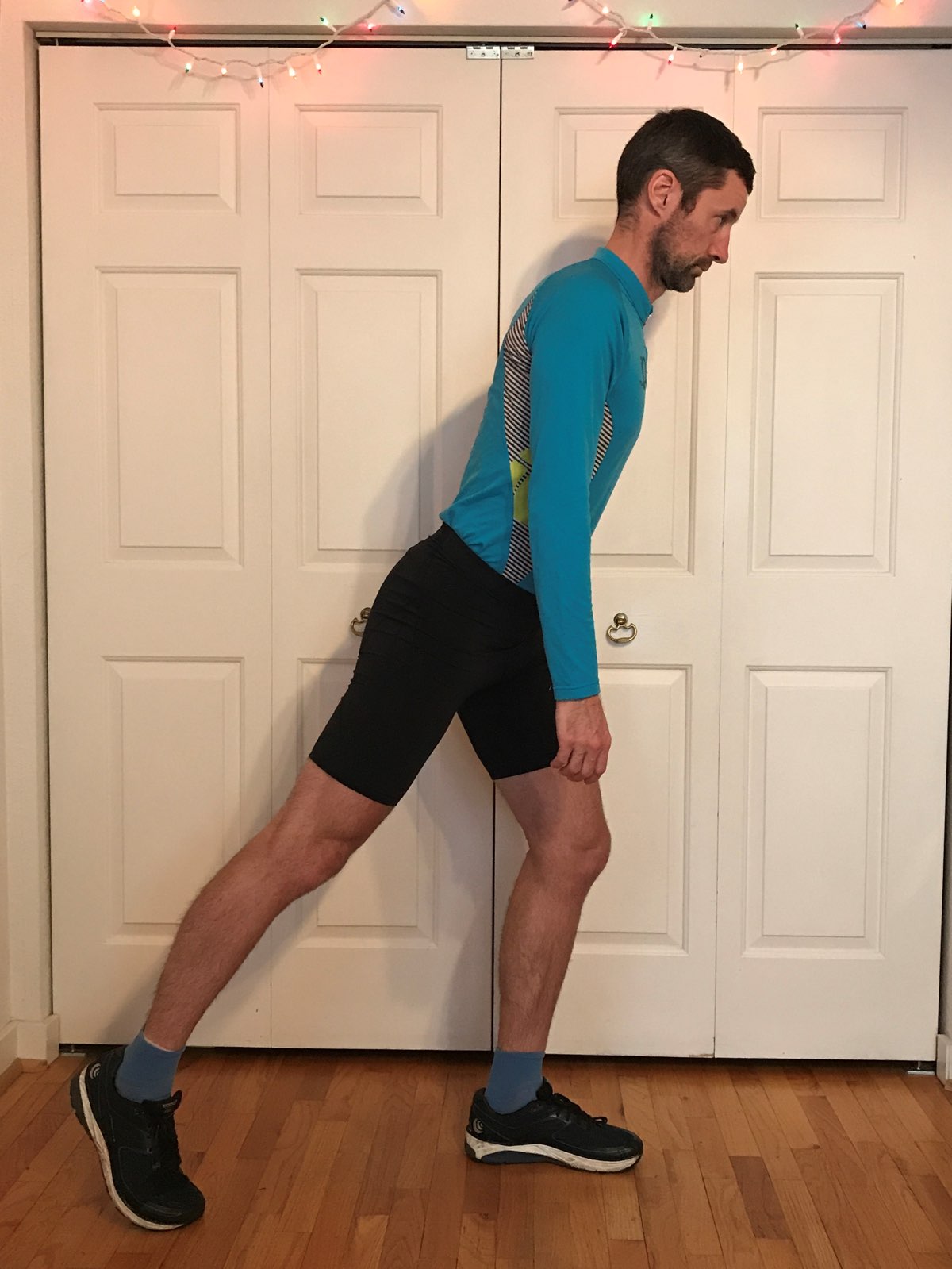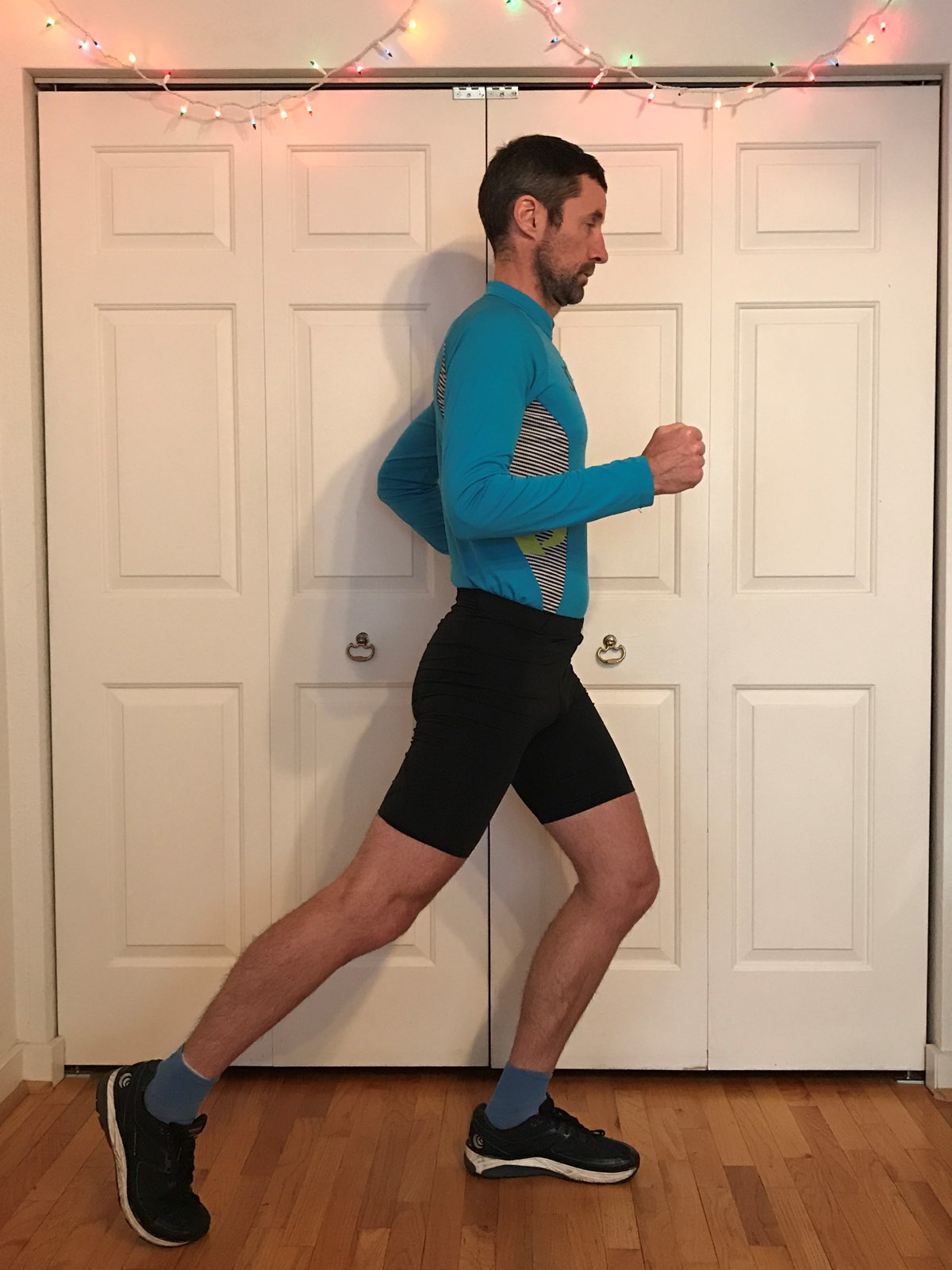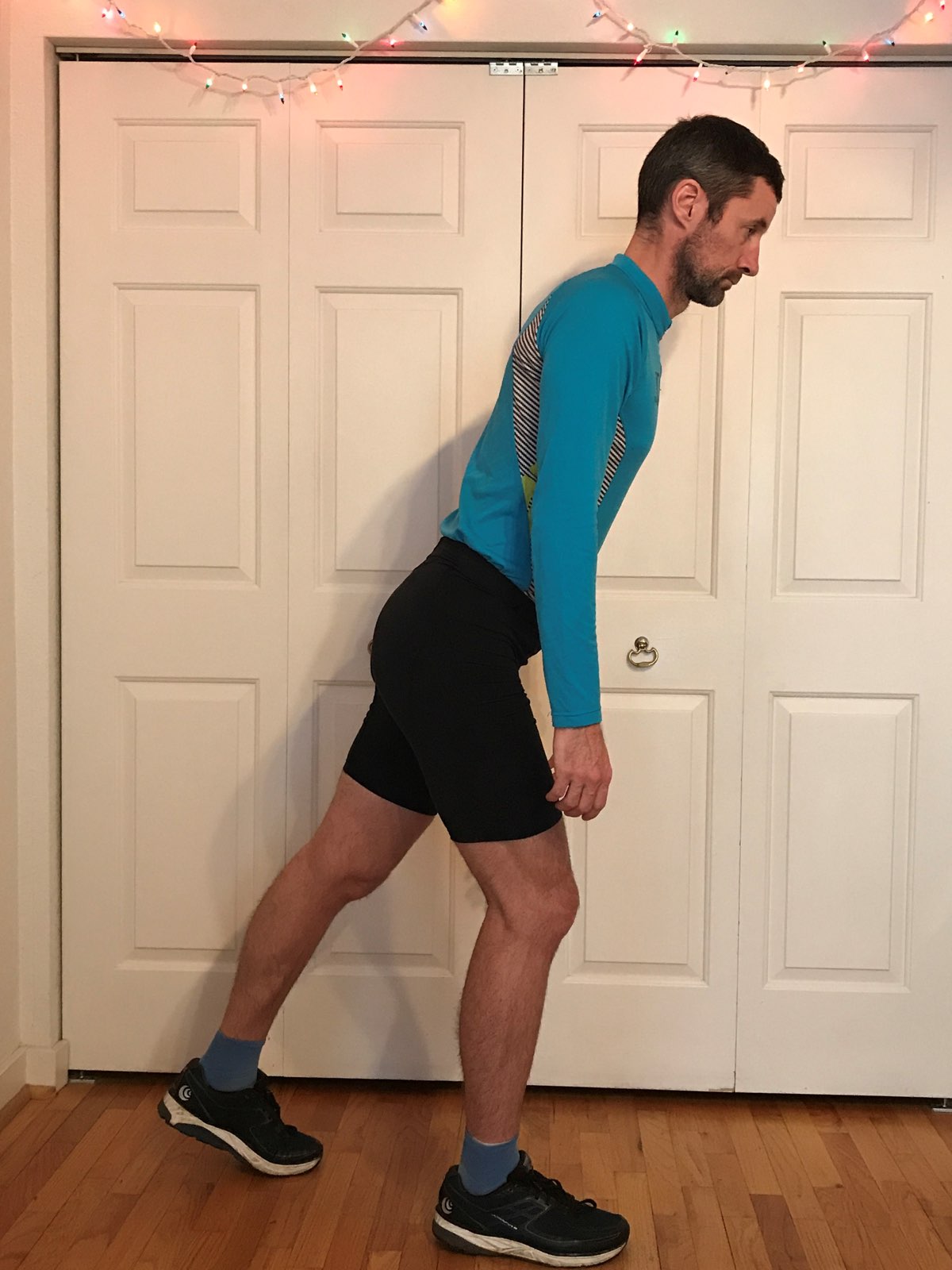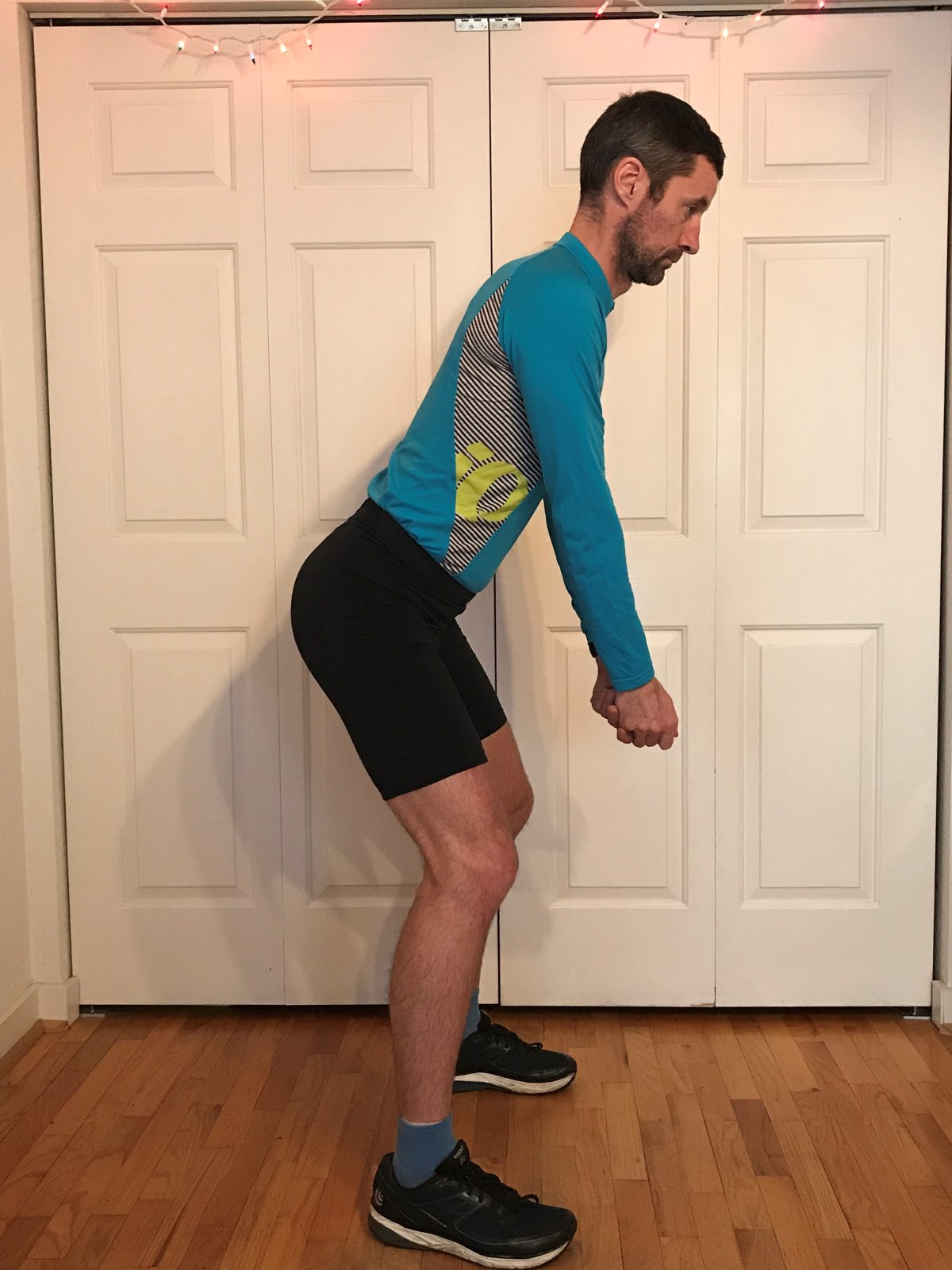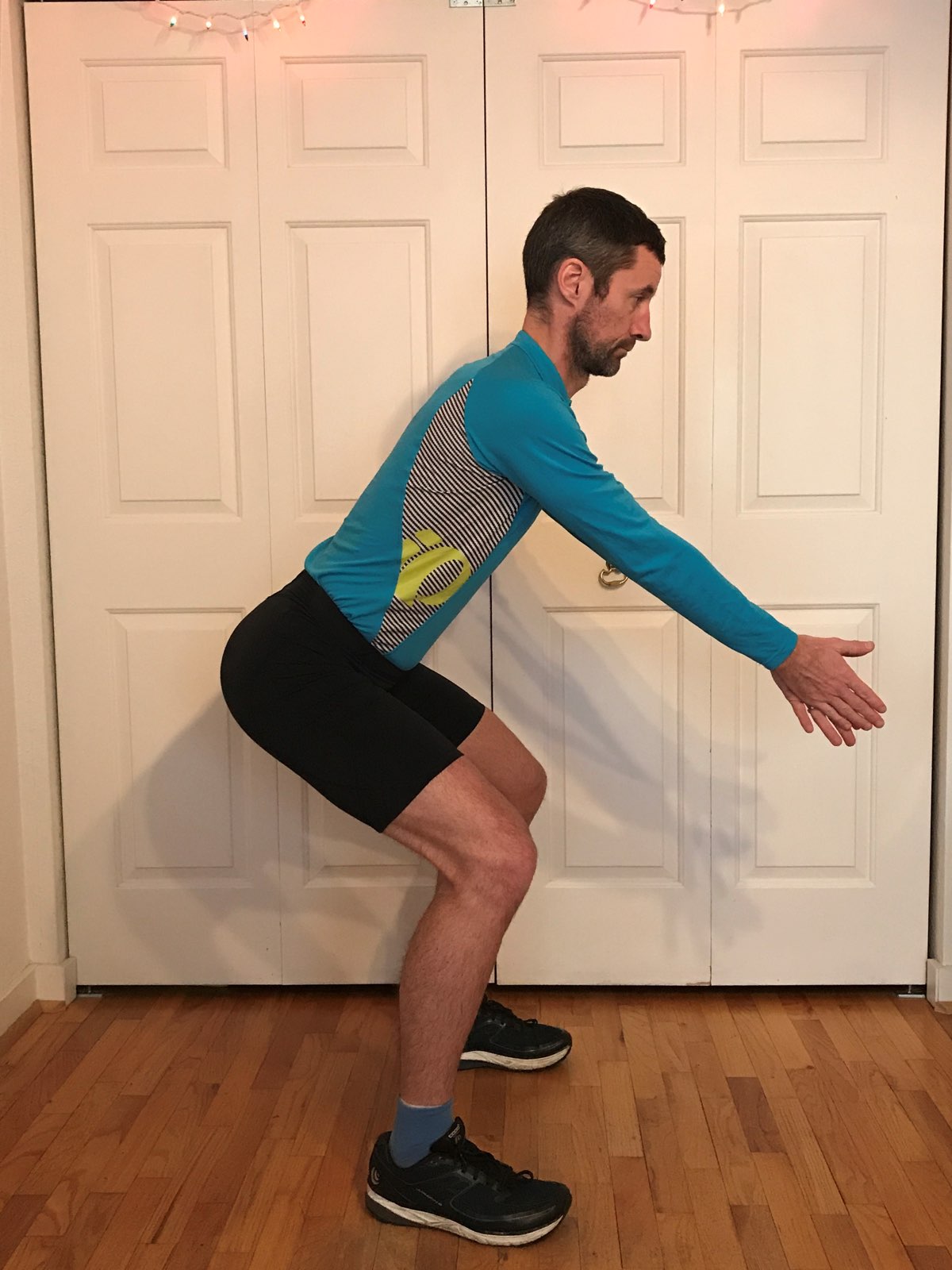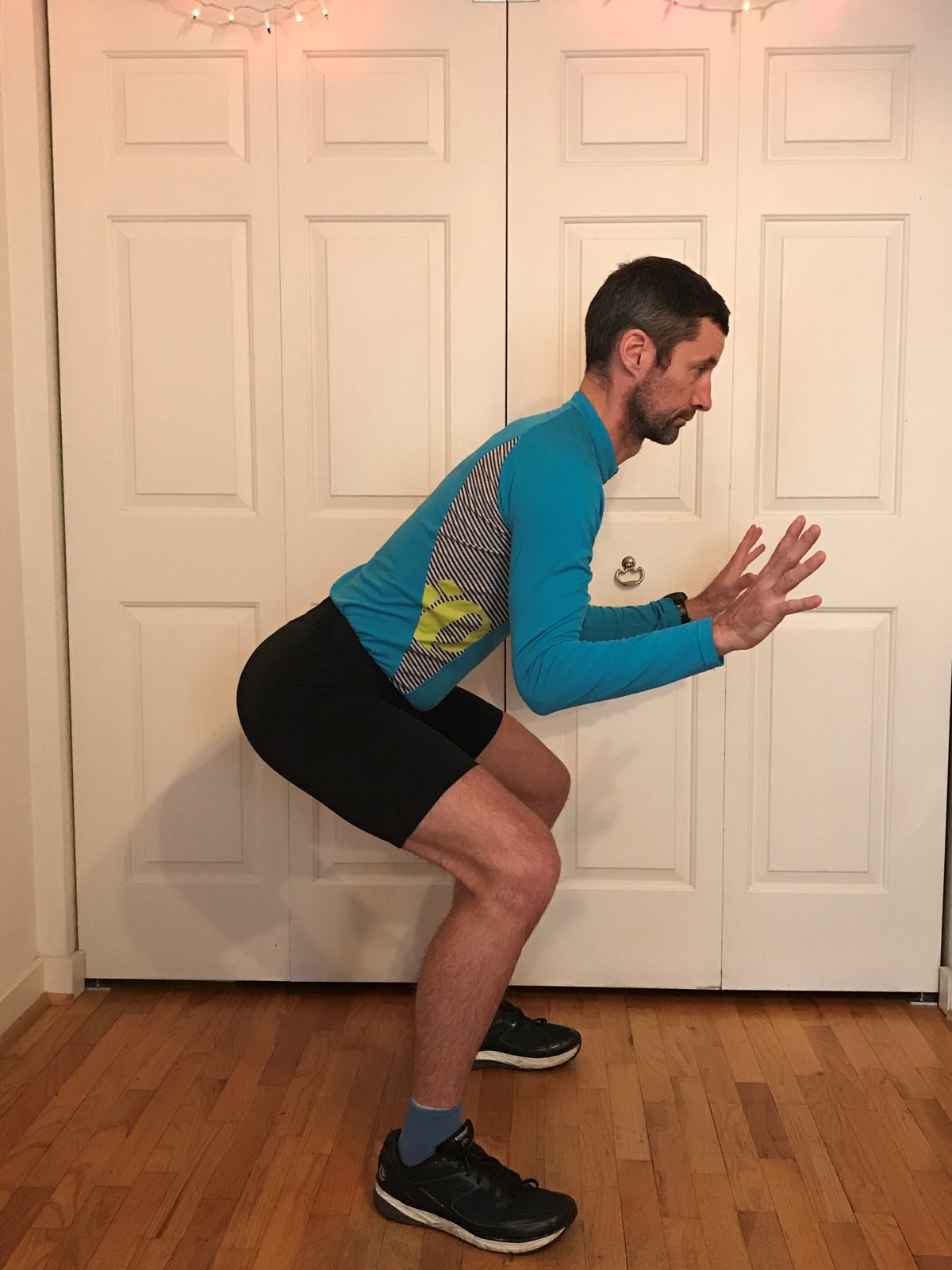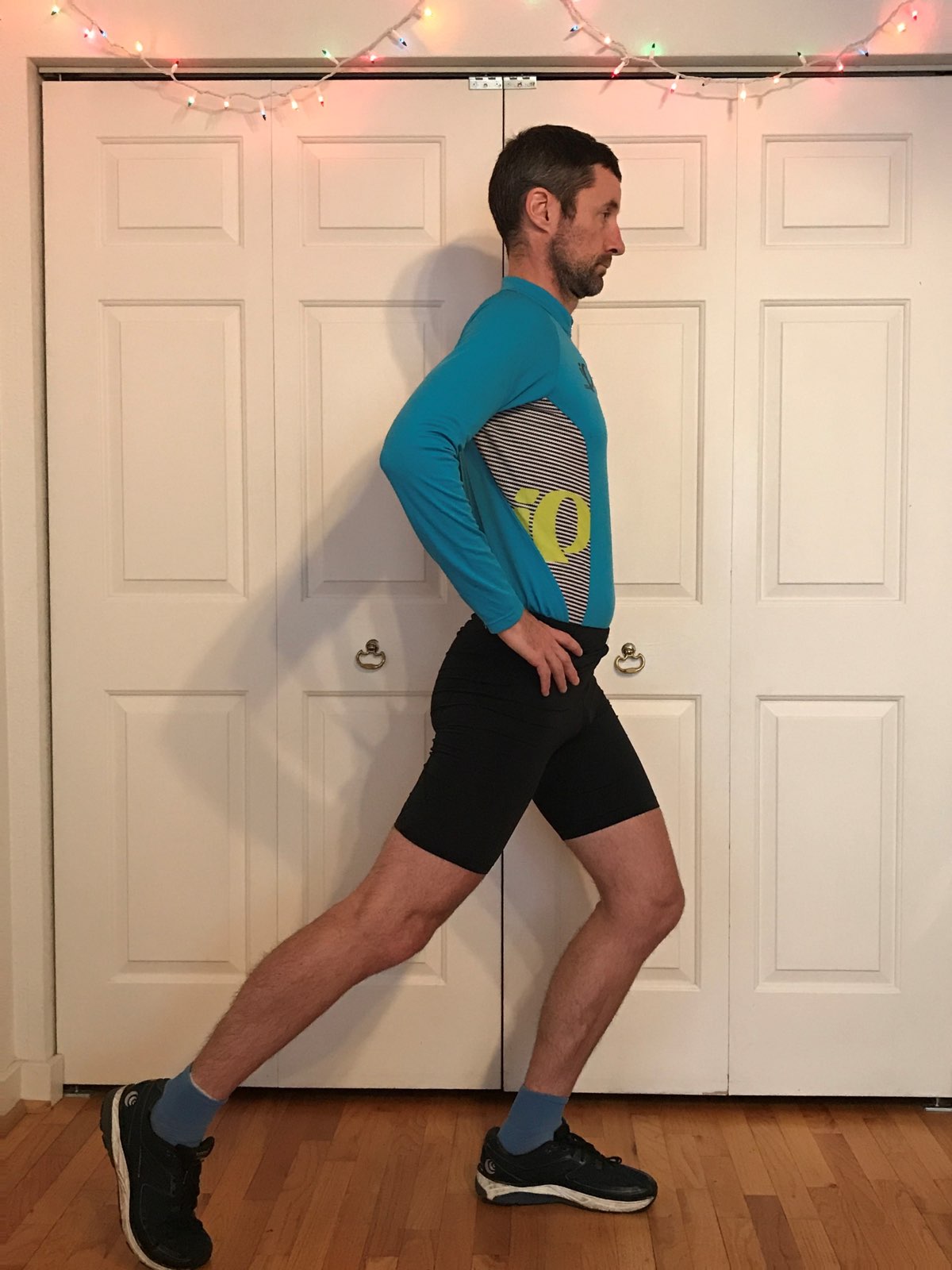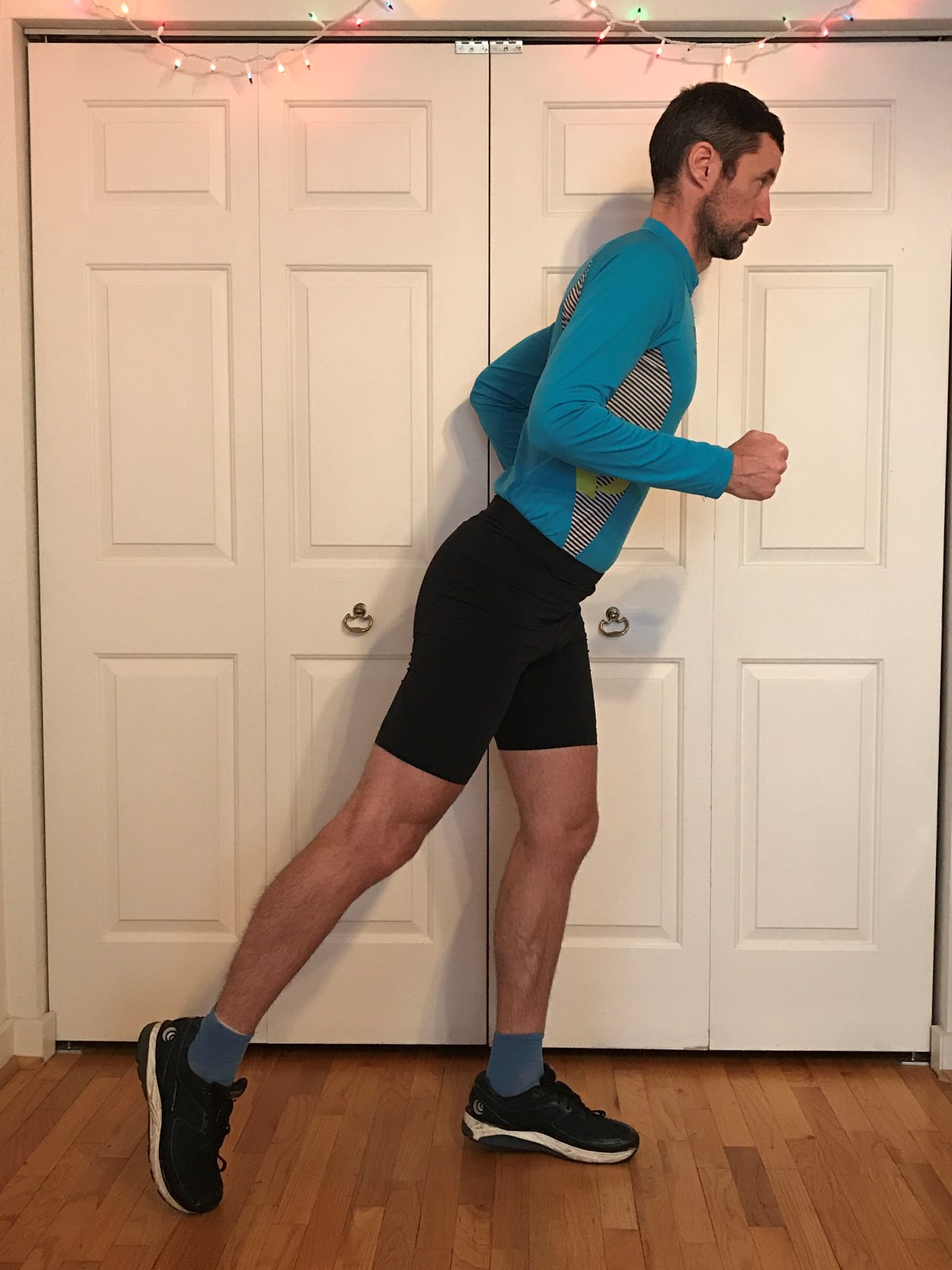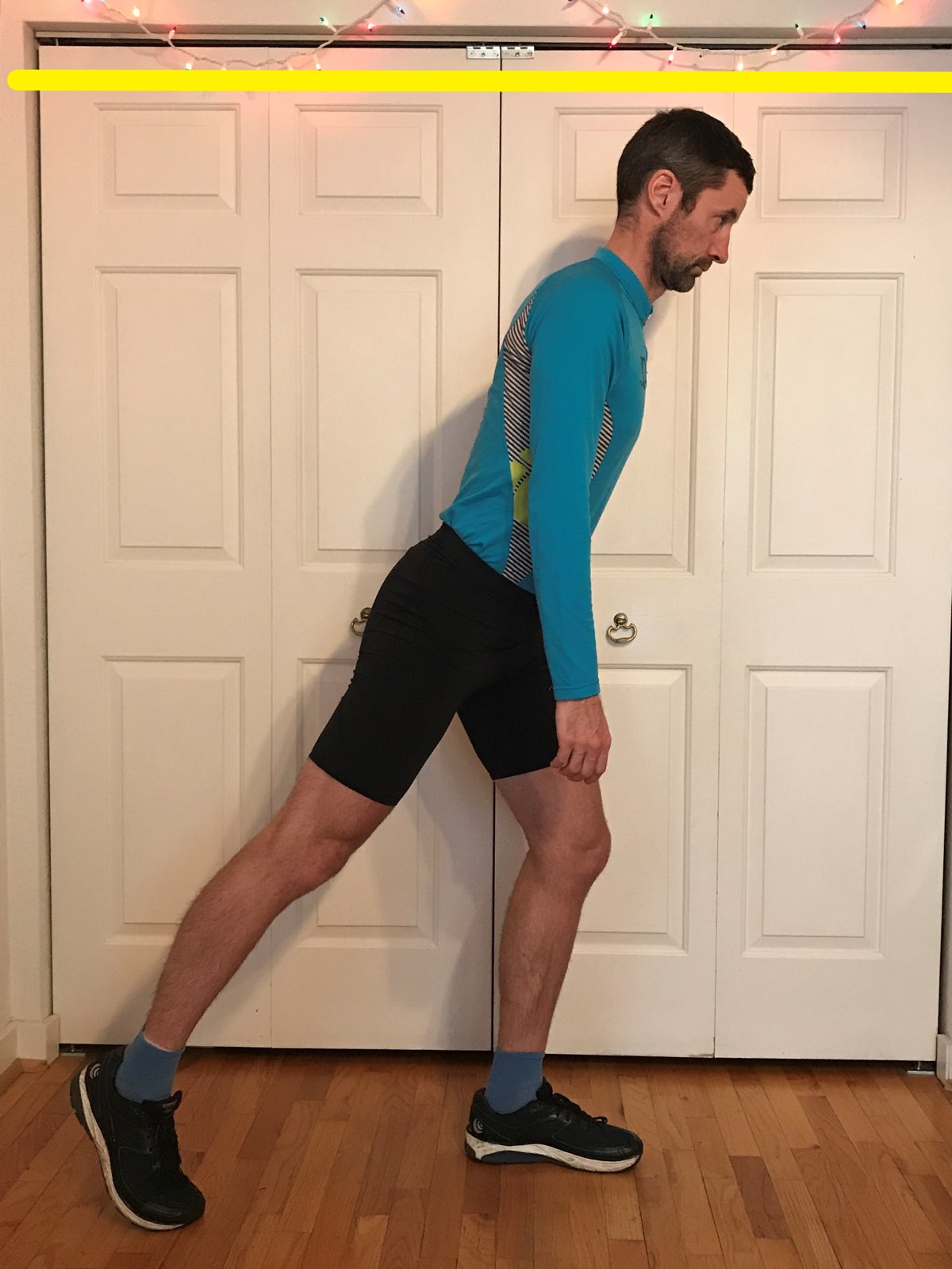 In my almost eight years at the helm of the “Stay the Course” column, I’ve written a lot about running-stride mechanics, covering everything from standing posture to hip mobility, and from arm swing to foot strike (in both planes). Yet as I approach my 100th iRunFar column (this is number 97 and counting!), I still felt something was missing.
In my almost eight years at the helm of the “Stay the Course” column, I’ve written a lot about running-stride mechanics, covering everything from standing posture to hip mobility, and from arm swing to foot strike (in both planes). Yet as I approach my 100th iRunFar column (this is number 97 and counting!), I still felt something was missing.
How do we position our body in space for the fastest, most efficient, and most sustainable running?
Something so simple is still subject to much debate. Some people believe that forward propulsion requires leaning forward at the ankle. Others, including some recent running-injury researchers, believe that a forward trunk lean creates too much landing stress and that our bodies should remain upright when running.
In this article, I outline what I have found through didactic study, clinical findings, coaching, and athletic experience to be the most sustainable dynamic running posture: the hip hinge. In case you missed it, check out part one of the hip hinge series.
Hip Hinge Defined
The hip hinge is an isolated flexion movement at the hip (coupled with a slight flexion at the knee) that does two things:
- It positions the hips (more specifically, the pelvis) behind our body; and
- It orients our trunk forward.
The result is an athletic position that allows the hips to powerfully push behind and drive forward, places the trunk in a sustainable forward inclination, and helps facilitate the most efficient possible foot strike. But before we directly apply it to running, let’s dig deeper into how the hip hinge accomplishes all these things.
Efficient Forward Motion Requires a Weight Shift
My clinical experience in physiotherapy and Functional Manual Therapy study has informed me about several key posture and movement principles that are crucial for efficient, strong, fast, and pain-free function.
Posture efficiency comprises the very foundation of athletic movement. It’s the vertical stacking and neutrally angled (curve-counter-balancing) alignment of the head, trunk, and limbs in standing. Benefits of an efficient standing posture include automatic core engagement, efficient energy flow through our body, and maximal ventilation.
Okay, so we have great upright posture, but how do we apply this alignment to running? Before answering that, let’s take another step back. How do we generate any forward movement at all? The answer is weight shift. Weight shift is any movement of our body mass outside our base of support, usually toward a new support base. In upright standing, our body mass–mostly comprised of our trunk–rests atop our feet and legs. Shifting weight in running requires somehow moving the trunk away from the rear push-off leg and toward the forward landing leg.
Forward movement, then, is initiated by weight-shifting just beyond that forward base of support, or ‘falling forward,’ with the push-off leg driving forward to quickly become the new base of support.
The question among biomechanists, sports-medicine professionals, and coaches then becomes: what is the most efficient way to weight shift? Some believe we should simply lean forward at the ankles. That through ankle dorsiflexion, the weight is shifted forward. However, without flexion at any other joint, the weight must be supported entirely by the lower legs. This puts tremendous load in the shin and foot muscles.
If you try this, it can be a challenge to hold this position for even a few seconds. And while such an ankle lean might be important to initiate running, it is not an efficient way to maintain a weight-shift position while propelling ourselves from the push-off leg to the landing leg over and over again while running. This high degree of lower-leg load is what is often cited in research studies, which often recommend against forward trunk lean. Thus many gait specialists eschew any weight shift at all!
But what about the hip hinge? A hip hinge positions the pelvis posteriorly. In doing so, not only does it position the hip joint to push off behind, but it creates a natural forward inclination so that our body is aligned, at an angle, in the same straight, vertical alignment we adopted in standing. Our bodies make a straight (but angled) line from our ear to our rear push-off foot. This maintains that key neutral alignment, while at the same time orienting the body forward and over the new base of support, the forward leg. And, it does it sustainably, using the powerful hip joint (as well as a strong, rigid, and slightly flexed knee) to support the body.
Below I demonstrate the hip hinge in a static, staggered stance:
As you can see, the body is oriented in the same straight line, aligned with the push-off leg. The forward landing leg is flexed at the hip and knee. This has huge implications for efficient, athletic running. And, as we’ll talk about later, it’s also a position seen across many athletic movements.
Hip Hinging: Powerful Hips, Minimal Landing Stress
Weight shifting with a hip hinge has two key benefits. First, the butt-back position puts the hips in a position to do work. The gluteal muscles, led by the gluteus maximus, function to extend the hip joint by pulling the femur from a flexed, forward position and extending it equal to the trunk and pelvis. Hip hinging–the posterior pelvis position–creates the flexed hip you see at landing and mid-stance. This position allows the glutes to do what they do best: to push and pull the leg beneath and behind and in doing so propel our body forward.
Conversely, if we land in a position without hip flexion or in a position where thigh and trunk are neutral, there is nowhere for the hip to go. The glutes have nothing to pull on and are unable to extend. I call this posture ‘standing up in your stride.’ The only option for propulsion is to compensate with bouncing, or by flexing and extending at the knee and ankle. This bounce-along uses muscles that are largely intended to stabilize us in stance, is an inferior propulsion strategy, and can create overuse strain to the tissues around the ankle and knee, including the foot, Achilles, calf, quads, hamstrings, and knees.
The second benefit of the hip hinge is forward orientation of the trunk. A forward trunk has two effects of its own. It helps maintain our forward orientation and it accentuates efficient landing by allowing our foot to land beneath it. This is indeed the key for the most efficient foot strike, that our foot lands very nearly over our body’s forward center of mass. This helps preserve landing force for forward propulsion and limits the amount of energy absorbed by the leg and body. If our trunk is too upright or backward-leaning, the force of our full body weight passes through the leg and creates a braking force. This inherent inefficiency is behind the majority of aches, pains, and overuse injuries in running.
Returning to forward orientation, a forward lean derived from a hip hinge is inherently more sustainable than trying to do an upright lean at the ankle. Because it is created at the hip, the center of mass is split between its two bases of support, the rear push-off leg and the forward landing leg. This creates a strong, stable, efficient, and trustworthy forward position.
Hip Hinge: The Universal Athletic Position
One final argument for the hip hinge is that I believe in unifying principles. We are but one human body, so it stands to reason that what is good for one sport or movement system should be good for another. What is most strong and efficient for football or martial arts should be similar in running. This is certainly true for the hip hinge, because it represents the universal athletic position for all sports:
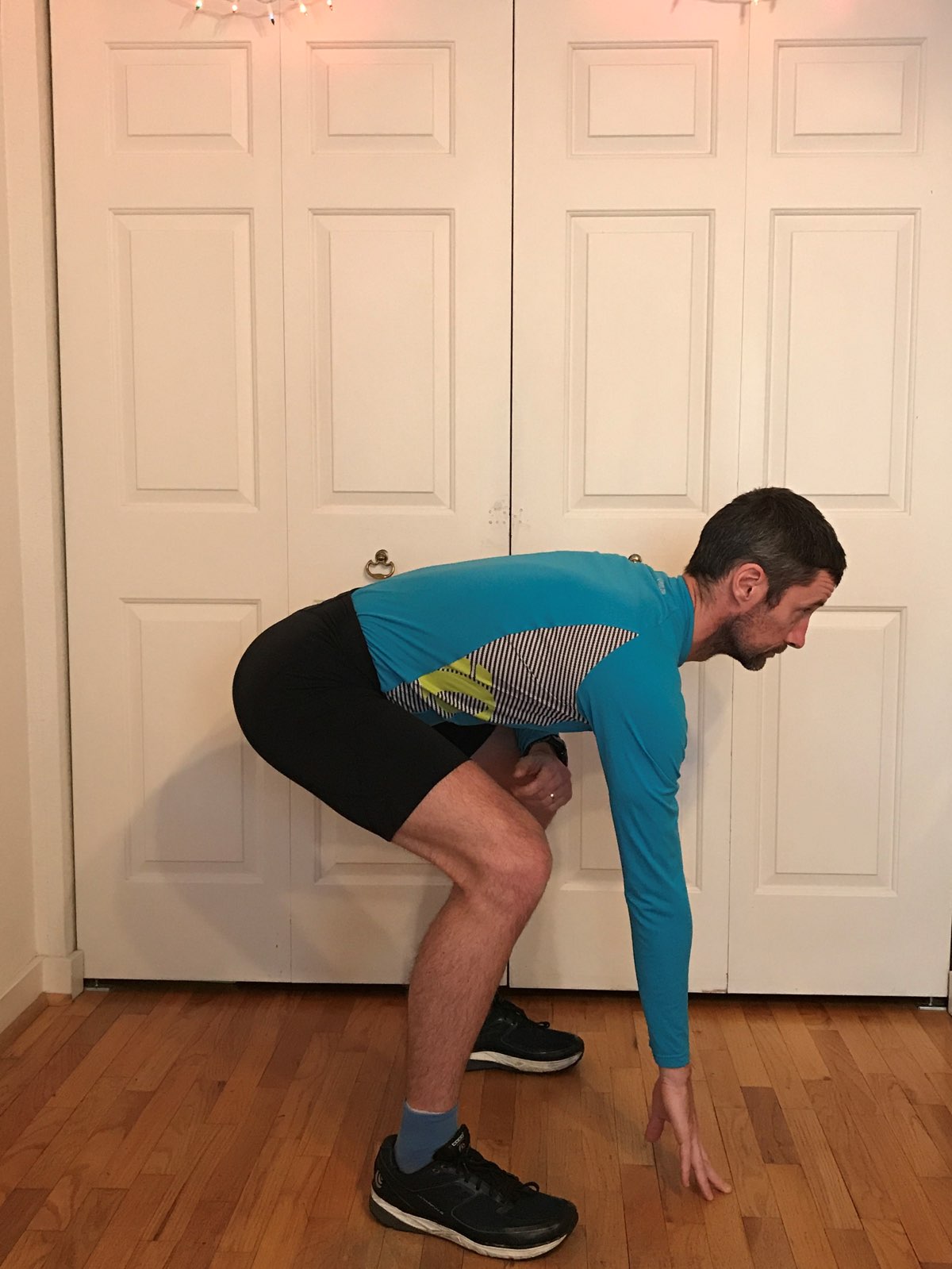
Football position. (Or Joe’s poor attempt to conjure his ninth-grade football stance. Note the lack of trunk neutral.)
Getting into Your Hips: Two Simple Visuals for Finding Your Running Hip Hinge
The Starting-Line Position
After finding posture neutral, the next step toward efficient running posture is, quite simply, getting on the starting line of a race. Take one foot and place it behind the other. While doing so, maintain the upright alignment so that your body is in a straight line from rear ankle to ear:
In doing so, the forward leg should have a slight flexion at both the knee and hip. This aspect is crucial and creates the hip-hinge effect in the stance leg.
Once you adopt this position, play with two different and inefficient positions. First, maintain the staggered stance, but allow your pelvis to drift forward:
This is a loss of hip hinge. As you can see, the pelvis has drifted forward and the trunk is vertical over the hip. The glutes cannot extend, so flexion can only occur at the knee. A bouncing compensation often results.
Second, maintain stagger and the forward lean, but ‘squeeze’ the hip:
Since hip and flexion is lost, the glutes, once again, have no way to generate push-off. Compensations result, usually recruiting too much lumbar extension. This ultimately pulls our body upright, which is why it is so difficult to sustainably lean forward at the ankle alone.
Running Through a Tunnel
Even if it is the most efficient position, a hip hinge requires strong hip and core muscles, and it can be a challenge to maintain! Moreover, it is easy to lose the hip-loaded position by running too tall or simply leaning excessively. The cue that is most helpful for me is what I call ‘running through a tunnel.’ When you’re in a hip-hinged position, the flexion at the stance knee and hip lowers the body closer to the ground by an inch or so.
For example, I am six feet tall, so I imagine that I’m running through a tunnel that is five feet, eleven inches high. If I maintain my hip hinge, I can run through it. But if I lose my hip hinge and stand up in my stride, my head will hit its roof.
Final Thoughts
The hip-hinge position is, indeed, the universal athletic position that allows a runner to use his/her hip for maximal stability and propulsion. It also orients the body forward in such a way that results in the least amount of landing stress absorbed and the most energy used for forward motion.
Once you find your hip hinge, I recommend not only running in this position, but also adopting this athletic posture for running-specific strength and core-stability work! And if you have any doubts about doing the right thing and how it feels, self-assessment with a mirror or a camera phone is a great way to reinforce this small adjustment that will not only look better, but could result in huge improvements in your endurance, top speed, and overall running enjoyment!
Call for Comments (from Meghan)
- Do you think you hinge at the hips when you run generally?
- If so, what’s the hardest part about maintaining this posture while running for you?
